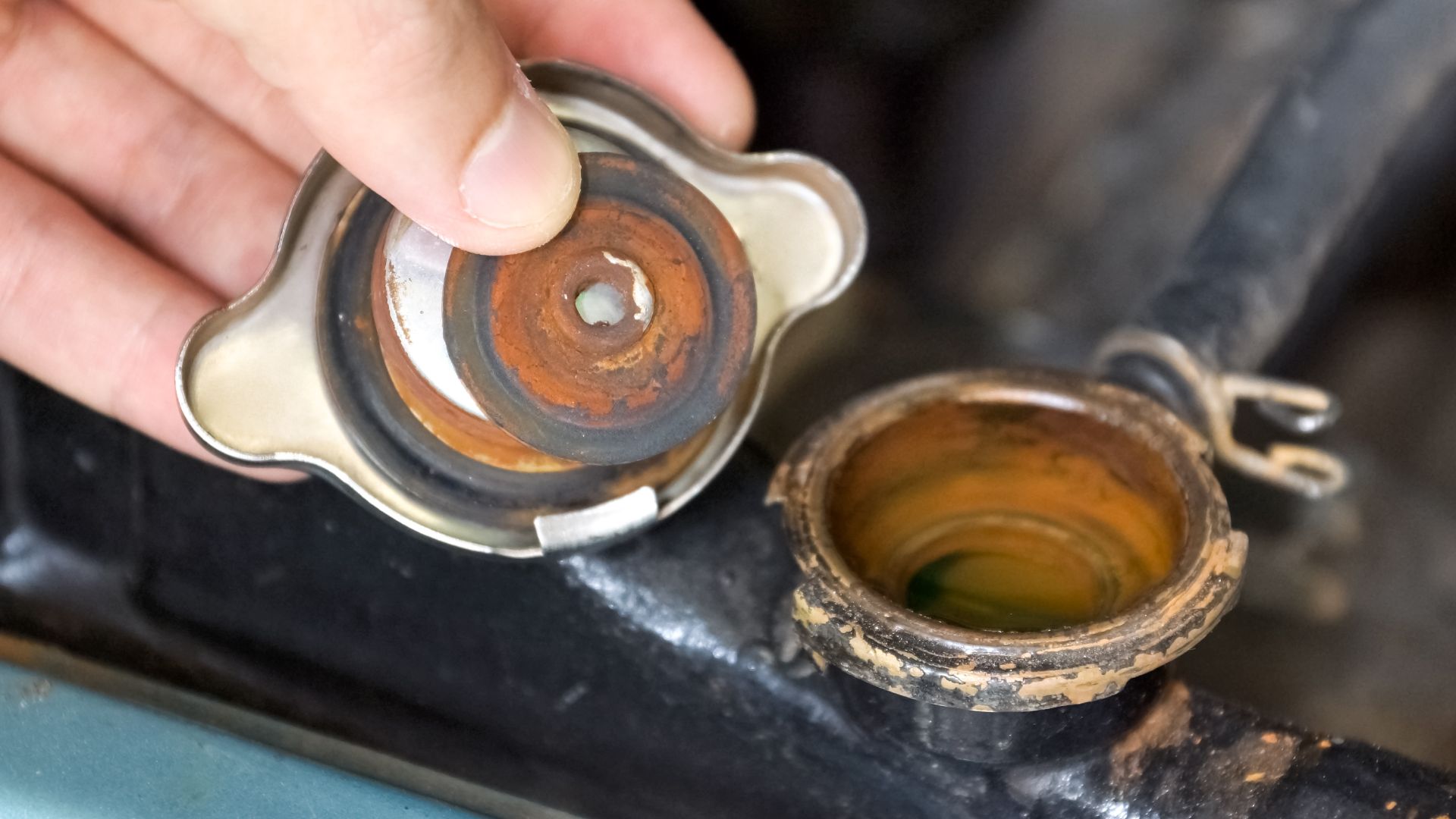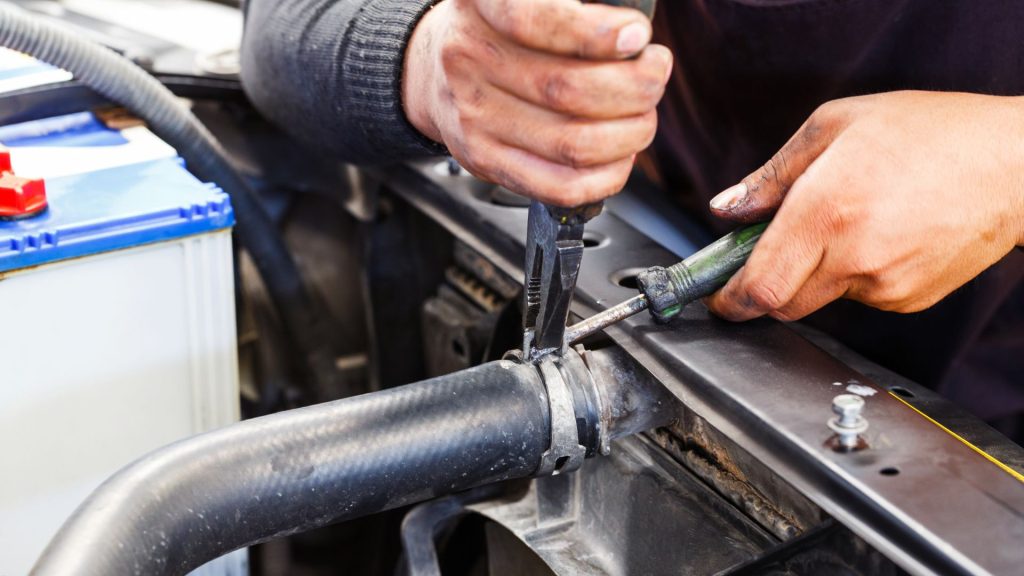Bad radiator cap symptoms – problems and solutions
Recognize the unmistakable indicators of a malfunctioning radiator cap to prevent expensive repairs.

The cooling system consists of several components. However, the radiator cap is one of the most significant parts. A radiator cap is a vehicle component responsible for collecting engine coolant and securing the cooling system under constant pressure.
Excessive pressure in the cooling system causes failure, while less pressure leads to the liquid coolant boiling off. The radiator cap helps prevent air from entering the cooling system and ensures the pressurized cooling system runs smoothly. It acts as a seal for the pressurized system making sure the coolant does not boil over.
Your vehicle is most likely to overheat if it has a cooling system failure. The combustion engine releases a lot of heat while operating, and a radiator cap malfunction can result in numerous car problems that could lead to total engine failure. In this article, we will explore the concept of bad radiator cap symptoms.
Functions of the radiator cap
The radiator cap might be one of the most impressive components in your vehicle’s cooling system. It is an integral part of the cooling system that serves four functions, and if one process goes wrong, you will most likely run into car problems. These functions include;
It pressurizes the cooling system
The radiator cap pressurizes the cooling system. This is why if the coolant leaks out from the radiator cap, it will not burn inside the cooling system but might burn off on the engine. Without a pressurized system, the coolant will start to boil, and your engine will be unable to cool down properly. It’s always worth checking the cap first in case of suspected radiator leaks.
It relieves excess pressure on the reservoir
Too much pressure is harmful, but an average pressure is adequate. Excessive pressure can blow up the radiator cap, the hoses, and other weak components in the cooling system. The radiator cap has a precise point where it opens to remove excess pressure to the reservoir, which has an additional coolant hose to relieve the pressure efficiently.
It seals the cooling system
The radiator cap seals the cooling system. It is pretty simple. If you take the radiator cap off, you can add coolant directly to the radiator, but you cannot have an outlet with the engine running because it can introduce air to the cooling system, which can be harmful.
It directs coolant to the radiator through a vacuum valve
When the coolant cools down, it contracts, lowering the coolant level in the radiator. The vacuum valve of the radiator’s cap delivers more coolant to the radiator to keep everything at a moderate level.
Symptoms of a bad radiator cap
The most common symptom of a faulty radiator cap is coolant leaks under the radiator. You can also notice dried streaks of coolant on the radiator cap. If there is a low coolant level, it indicates that the radiator cap is bad. Some of the most common symptoms of a bad radiator cap include;
Leaky coolant
When there is a coolant leakage under your vehicle, it is the first indication of a bad radiator cap. The cooling system is a sealed system which implies its content is meant to stay in at all times. The radiator cap seals the cooling system and prevents the coolant from escaping.
It also acts as a pressure valve if there is high pressure in the cooling system. After an extended period, the rubber seal on the radiator cap will lose its ability to create an adequate seal. If there is no seal, the coolant will leak from the radiator, causing a coolant loss from the system.
The radiator cap can get faulty due to a failure of the pressure spring. The pressure spring controls the flow of coolant to the coolant reservoir when the engine is hot. The coolant expands as it heats up, causing a pressure increase.
When the pressure reaches a certain point, the pressure spring in the radiator cap will back down, letting some coolants escape to the coolant overflow reservoir. If the radiator cap wears out, the pressure spring weakens and enables the reservoir to coolant stay at a lower coolant pressure. This leads to a reduction of coolant flowing to the engine and a less practical cooling system.
Flaky coolant around the radiator cap

A dried or flaky coolant around the radiator cap is a superficial symptom of a bad radiator cap. You can notice streaks of coolant down the side of the radiator, indicating a coolant loss from the top of the radiator when the engine is running.
The low coolant level in the overflow reservoir
The radiator cap is designed to control the flow of coolant that circulates in the engine to the overflow reservoir when the coolant reaches a particular pressure and temperature. If there is an issue with the radiator cap, it may not discharge the coolant back into the reservoir when necessary.
It could result in a low amount of coolant in the overflow reservoir, leakage, and some other minor issues in the cooling system. If the radiator cap releases the coolant at a lower pressure or too often, it can build up coolant in the overflow bottle.
Burst radiator hose

If there is high pressure in the cooling system, you may notice one or two hoses spraying coolant over the engine bay. The radiator hoses are sensitive to high and low pressures in the cooling system. A pressure increase of the coolant can lead to a burst or deformed hose.
The hose can form little drippings or get burst entirely depending on the harshness of the pressure and the hose’s age. If you notice bulges in any coolant hose around the engine, it is typically an indication of excessive pressure build-up. Because of all this, it’s crucial to pay attention to the symptoms of low coolant in your car.
When there is a coolant leak, a pressure drop can lead to collapsed hoses. This will not damage the hose as much as a pressure increase will.
You can notice a collapsed hose when the pressure drops and the engine has cooled down. A pressure drop may not damage the hose permanently, but it can cause the engine to overheat, which can permanently damage the engine.
An overheating engine
A faulty radiator cap can cause an engine to overheat. There are a few reasons for this. If the radiator cap seal fails, airflow may get into the cooling system as the coolant leaks out.
This decreases the proficiency of the coolant and how sufficiently it regulates the engine’s temperature. An overheated engine can result from a faulty radiator cap. The radiator cap directly impacts the engine’s temperature by controlling the coolant pressure.
The higher the coolant pressure, the more significant heat it absorbs from the engine. If the radiator cap lets the coolant escape into the overflow reservoir or leak, it will reduce the pressure in the cooling system and the heat absorption of the coolant.
Coolant leak around the engine bay
A bad radiator cap increases the pressure within the cooling system when the engine is hot. This can result in coolant leaks around the engine if it continuously rises above optimal operating pressure. The significant places for the coolant to leak from include; the joints at the radiator hoses, the water pump, the coolant overflow reservoir, and from the radiator cap.
Excessive amount of air in the cooling system
A leak in the radiator pressure cap will let air get sucked into the cooling system as the engine temperature decreases. When the air has been sucked into the cooling system, it can lead to the engine overheating as the cooling system will be replaced by air.
What problems can a bad radiator cap cause?
When you have a bad radiator cap, it can cause your engine to overheat, causing a performance loss among several engine problems. Your vehicle’s cabin heater depends on the hot coolant from the radiator to blow air into the passenger’s area. If there is a radiator leak, there will be less coolant released to the cabin heater, and the car interior will not attain your desired temperature.
How often do radiator caps go bad?
You do not need to replace a radiator cap often since it doesn’t get bad frequently. However, it is recommended you replace it every five years to prevent problems from coming up. It is essential to inspect the radiator caps to be aware of the issues.
Can I drive with a bad radiator cap?
No, it isn’t safe to drive with a faulty radiator cap because the cooling system will lose the coolant, and it will not be able to replenish its loss. You can’t go for long miles with a bad radiator cap because the radiator will overheat, causing the coolant to steam out and the engine to overheat.
How do you fix a bad radiator cap?
You can fix a bad radiator cap by draining the coolant fluid. Replace the radiator cap with a new one that matches the manufacturer’s cap. Refill the radiator with a new coolant, and you are ready to test run.
Our take
The radiator cap plays a vital role in the engine’s operation. It ensures the car’s cooling system is at optimal pressure to cool the engine and avoid overheating adequately.
A bad radiator cap can cause damage to the vehicle by engine knocking, hose leaks, and overheating. It is essential to visit a mechanic if you notice symptoms of a bad radiator.